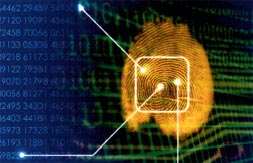RECENT RESEARCH HAS shown that 70 percent of consumers worldwide would support biometrics technologies as a way to verify a person’s identity, providing it is administered by a ‘trusted’ organisation such as a healthcare provider, bank or government organisation.
This research, conducted for Unisys and released in May, also found 66 percent of customers worldwide thought biometrics was “a more ideal method of combating fraud and identity theft” than the use of smart cards or tokens.
For vendors and their security channel partners, this suggests the long-awaited acceptance of biometrics as a means of identity management and access control may be finally happening.
“We’ve been messing around with this technology in this market for the past 10 years,” says Bruce Lyman, CEO of Argus Solutions, a Sydney-based biometrics company.
“Just in the past 12 to 24 months the dynamic around the market has changed significantly. It’s what we’ve been aiming for but it’s only starting to happen now,” he says.
There are some in the security arena who say September 11 has given biometrics a giant shove along. However, Lyman says what is changing the biometrics market is the move away from a focus on the ‘sensor’ technology, to now providing applications that are relevant and provide a measurable return on investment for customers.
Terry Hartmann, director and global solutions lead, secure ID and biometrics, at Unisys Australia, acknowledges biometrics was slow to take off in Australia, but right now there’s a “plethora of interest from government” in the use of biometrics technology.
“Compared to a year ago, there’s much more interest, and many more tenders on the street” Hartmann says. “There’s port security, border security, prevention of fraud, and overall this idea of linking people to their credentials is very much on people’s mind.”
Biometrics is one of the few technologies government has driven, and actually been ahead of commercial applications. Public acceptance of biometrics has also grown. “The public has shown that if it’s convenient and streamlines services, then they will opt in,” Hartmann says.
Despite there being a range of biometric technologies available, fingerprint technology is establishing itself as a high performance but low cost way of providing a biometric security. Iris scanning and face recognition is more expensive and a little more difficult to integrate, says David Nicol, Lenovo’s product marketing manager.

Lenovo has fingerprint biometrics in its computers. “Across all of our ThinkPad range, the majority of our models now have integrated fingerprint reader. We offer an optional keyboard or external USB fingerprint reader which goes with our desktops.”
Nicol says Lenovo has had significant growth in this area in the past 12 months, because more customers are looking to implement security solutions and the cost has come down significantly.
What and where?
Typically the principles of identity are something you have – such as an ID card, drivers’ licence or passport – backed up with something you know – such as a PIN or password.
Hartmann says biometrics comes into it by being something you are – some physical characteristic such as your face, your fingerprints, your iris pattern, or a behavioural characteristic such as your voice or even the way you walk.
The big areas for biometrics are government, identification and credentialling. An emerging area is access, whether it be access to buildings or access to data.
Grocery chains in the US are allowing payment via fingerprint scanning, where customers register, select groceries, and then swipe their fingerprint at the counter to pay.
In Australia, Centrelink has trialled the use of voice recognition to authenticate people calling in. Gyms and theme parks have trialled fingerprint scanning to access lockers, and the military uses facial recognition technology for its terrorist watch-lists.
Queensland biometrics company, Biometric Innovations, targets three distinct markets: high-end government, time and attendance, and access control.
David Smith, director of engineering at Biometric Innovations, says while government implementations are a big focus, the company is also getting a lot more interest from the bigger markets of workforce ‘time and attendance’ and also access control, providing a higher level of security without people having to remember passwords, PINs or cards.
Argus’ Lyman says that although there has always been something of a holy grail about data security and protection, the problem of using biometrics for that purpose is that it has always been deemed to be far too expensive.
 |
| Biometric Innovations' Smith: Traditionally biometrics deemed as too expensive |
“You were talking about a $500 [biometric] solution to replace what it cost to put in a password layer or an authentication layer. But what we’re seeing now is people are able to tie in their logical access, their desktop access, to wider authentication databases. So the same software, protocols and infrastructure that’s used to control who comes in the front door, can be used to control who’s on the laptop or desktop. Data protection can be tied in with the same identity protocols,” he says.
Argus Solutions delivers the face recognition tool set for the NSW Police. “When you see the police use it, it’s almost got nothing to do with cameras and pictures, but the sorts of investigative work they can do and the business improvements they have,” says Lyman. “What used to take six to 12 months by way of investigation now takes one or two days. Those sorts of improvements are what attract customers to [biometrics].”
Lyman says another example where biometrics can deliver a significant business improvement is seen in places like St Vincent’s Hospital in Sydney. “The deployment of an iris-based drug dispensing program reduced what used to take 140 man hours per week down to 11 hours. That’s a significant improvement figure for anyone.”
While the early uptake of biometric technology has predominantly been in government work or large organisations, SMBs are also getting in on the act.
Lyman says one Argus product is being used in small pharmacies. “We have a lot of small pharmacists using a biometric-based application for managing the dispensing of Schedule 8 and Schedule 11 [dangerous category] drugs. They’re using an iris-recognition system, but they could use a fingerprint system if they like,” he says.
There are stringent, time-consuming Health Department dispensing and reporting regulations around these Schedule drugs. However, the biometrics system automates the dispensing and the reporting, so what used to take 10–15 minutes, now takes 10–20 seconds, he says. “Even one-man pharmacists are using these technologies now to build their business,” Lyman says.
Some of the initial paranoia about surrendering part of oneself for ID purposes has eased off. One example is Sydney’s Silverwater Prison.
Visitors to the prison were invited to enrol in a biometric system to speed up and smooth the visiting process. “Instead of waiting in a line, they walk in, engage the biometric and are processed immediately,” Lyman says.
The previous option was a long wait in line to be processed manually.
“Visitors weren’t told to enrol. They were given biometrics as an alternative, and 35,000 members of the public are now enrolled in that system. There has been no-one who’s elected for the manual process,” Lyman says.
 |
| Argus' Lyman: Messing around with biometrics for 10 years |
Unisys started working on Australian ePassports (facial recognition technology) in 2002, and it was implemented in October last year. To date, 700,000 ePassports have been issued by the Australian government and these are being used by people travelling all around the world, Hartmann says.
However, privacy and civil liberty advocates have questioned people’s willingness to give up their unique identifiers via iris, face, finger or voice scanning, with the short-term benefit of getting through a long queue faster.
“You need to be aware of fitness for purpose,” says Hartmann. “Sometimes biometrics can be taken to extremes. For example, it might not be appropriate to capture the biometrics of children just so they can take a book out of a library. People might step back from that.
If asked two years ago whether the channel could make money from biometrics, Lyman says his reply would have been “Absolutely not”.
And even 12 months ago he would not have been certain. “However, right now we’re getting quite remarkable success through our channel program. And talking to people like Hitachi – who are producing biometric hardware – and Panasonic and Oki, they’re starting to get emerging interest out of channels as well,” he says.
The problem was largely due to the fact there were few software applications behind the biometrics hardware.
Now that channel partners can get hold of good software applications, business is stronger, he says.
“You’re starting to get away from hardware margins and you’re talking software-type margins for the channel partners, so it becomes much more attractive. We’re not talking five to 10 points; we’re talking up to 30, 40, 50 points,” Lyman says. “And there are three-to-five-year maintenance contracts in the market now and we’re only going to see more of those.”
Biometric Innovations’ MD, Ken Angel, says the biometric hardware space will be saturated before too long, but there’s longevity in applications and service delivery.
“If you just went into hardware, there’s an awful lot of terminals and in a short time they’ll all be competing. You’ve got to have an application – that’s a lightly competitive industry so there is good margins in it,” Angel says.
Some of the biggest contracts the Australian Government has ever let are around ID-related things, such as border security, Hartmann says.




.jpg&h=142&w=230&c=1&s=1)

_(21).jpg&h=142&w=230&c=1&s=1)






.jpg&w=100&c=1&s=0)










